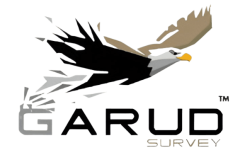Aerial Intelligence For Lidar
Lidar Survey
In the realm of cutting-edge surveying and geospatial data collection, Garud Survey stands out as a leader in harnessing the transformative power of LiDAR technology. Specializing in precision, innovation, and holistic solutions, Garud Survey is reshaping industries reliant on accurate spatial data.
LiDAR, utilizing laser pulses for distance measurement and detailed 3D mapping, has revolutionized traditional surveying. Garud Survey, with its expert team and state-of-the-art technology, pioneers LiDAR surveying across diverse sectors, from land development to disaster response.
A trailblazer in LiDAR surveying, Garud Survey ensures each project meets the highest standards of quality and precision. Their dedication to excellence is driving innovation and progress, making the future of geospatial data brighter and more accurate. With Garud Survey, precision is not just promised; it’s guaranteed, marking them as a beacon of excellence in the evolving landscape of LiDAR survey.
Highlights
- High Precision and Accuracy
- Rapid Data Collection
- Improved Safety
- Enhanced 3D Modeling
- Versatility
- Cost-Efficiency
- Detailed Vegetation Analysis
- Real-time Data
- Environmental Monitoring
- Infrastructure Maintenance
- High-Resolution Data
- Remote Sensing
Use of Drone in Lidar Survey
Drones, also known as Unmanned Aerial Vehicles (UAVs), are increasingly being used in combination with Light Detection and Ranging (LiDAR) technology for various surveying and mapping applications. This combination offers several advantages over traditional surveying methods, such as improved efficiency, accuracy, and safety. Here are some key uses of drones in LiDAR surveys:
- Topographic Mapping
- Forestry and Agriculture
- Infrastructure Inspection
- Mining and Quarrying
- Flood Modeling and Management
- Natural Disaster Assessment
- Archaeological Surveys
- Environmental Monitoring
- Transportation Planning
- Construction Site Monitoring
